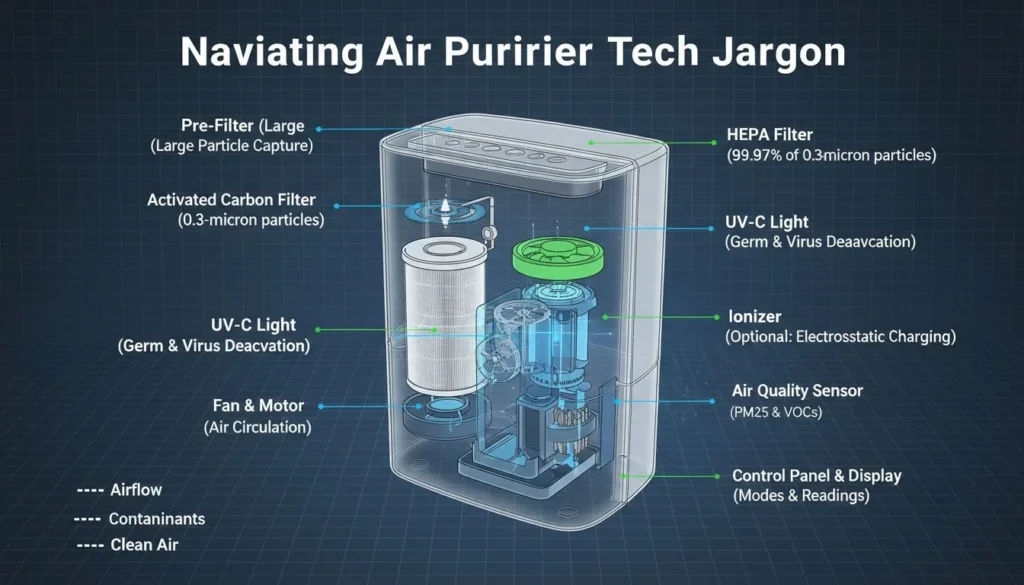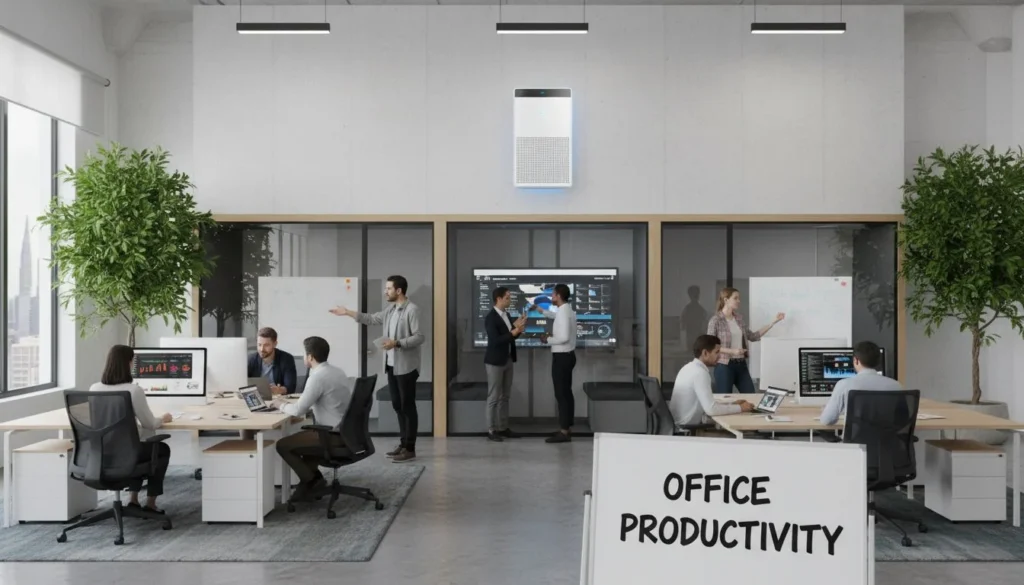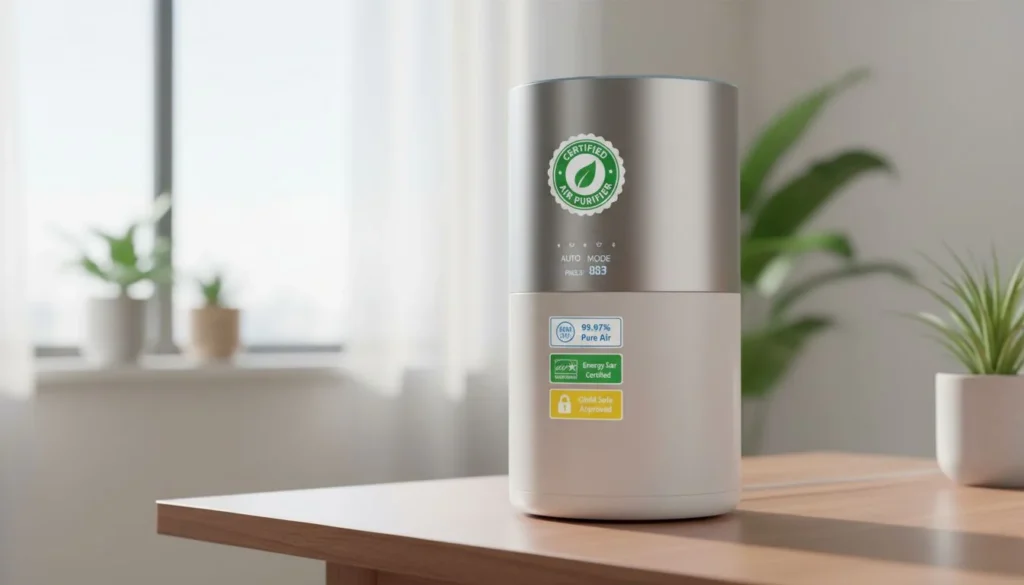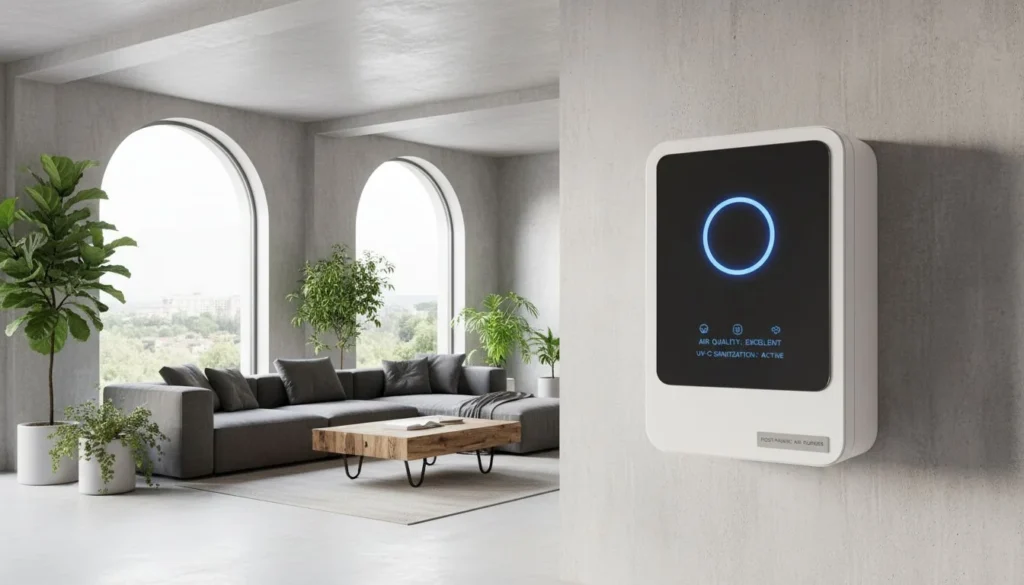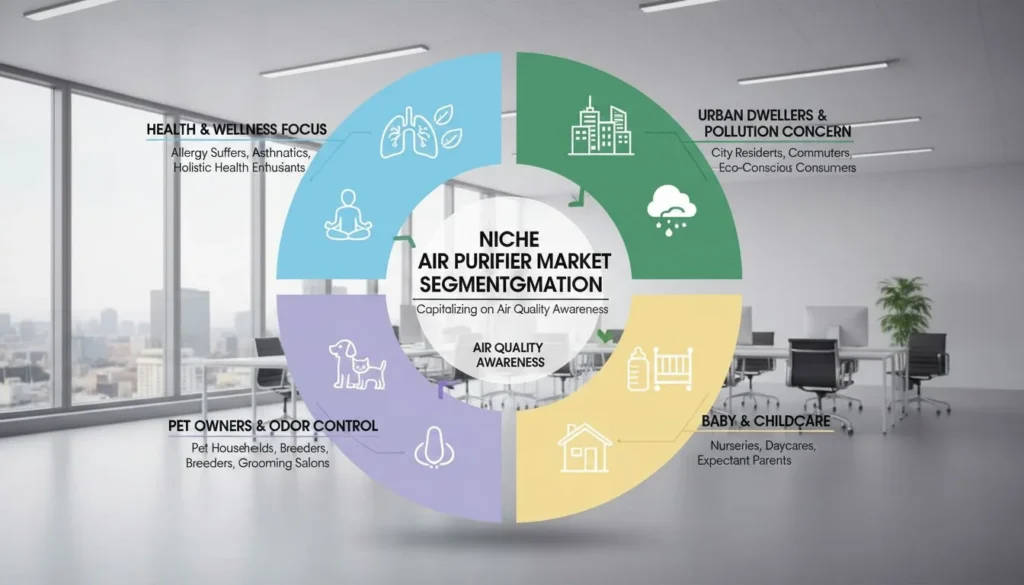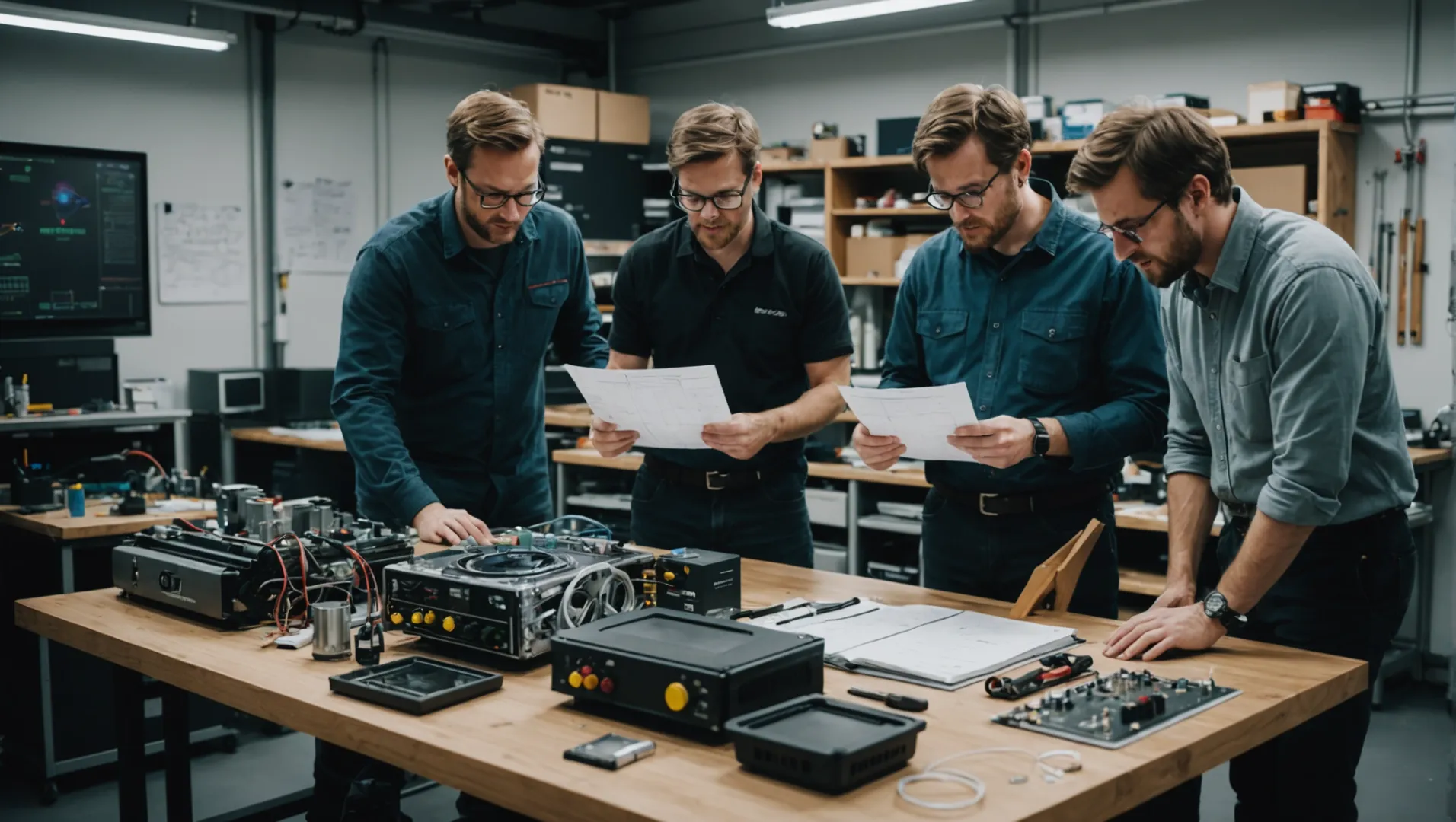
경쟁이 치열한 공기청정기 개발 업계에서 성공적인 제품을 만들려면 단순히 좋은 아이디어만으로는 부족합니다.
프로토타입은 다음과 같은 성능 지표를 테스트하는 데 도움이 되므로 공기청정기 개발에서 매우 중요합니다. CADR공기 흐름, 크기, 소음 수준 등을 파악할 수 있습니다. 또한 귀중한 시장 피드백을 제공하고, 비용 관리를 지원하며, 공급업체의 역량을 평가하는 데 도움을 줍니다.
프로토타입은 성능과 디자인에 대한 즉각적인 인사이트를 제공하지만, 그 영향력은 기술적 영역을 넘어서는 것입니다. 프로토타입 테스트의 광범위한 의미를 이해하면 제품 혁신과 시장 준비성을 크게 향상시킬 수 있습니다. 프로토타입이 공기청정기 개발의 모든 측면을 형성하는 방법에 대해 자세히 알아보세요.
프로토타입은 공기청정기 개발 비용을 절감하는 데 도움이 됩니다.True
프로토타입은 디자인을 조기에 개선하여 생산 비용을 줄임으로써 비용 절감 기회를 포착합니다.
공기청정기 프로토타이핑에서 평가하는 주요 성능 지표는 무엇인가요?
프로토타입 테스트는 공기청정기가 고성능 표준을 충족하는지 확인하는 데 매우 중요합니다.
공기청정기 프로토타이핑의 주요 성능 지표는 다음과 같습니다. CADR공기 흐름, 크기 및 소음 수준. 이러한 요소를 평가하여 디바이스의 효율성, 효과 및 시장 준비 상태를 확인할 수 있습니다.

깨끗한 공기 전달률 (CADR)
CADR 는 공기청정기가 분당 공급할 수 있는 깨끗한 공기의 양을 나타내는 필수 지표입니다. 연기, 꽃가루, 먼지를 걸러내는 장치의 능력을 측정하여 성능을 종합적으로 평가합니다. 수치가 높을수록 CADR 는 공기 정화 효율이 높다는 것을 의미하므로 프로토타입 제작에 있어 매우 중요한 요소입니다.
공기 흐름
공기 흐름은 특정 시간 내에 공기청정기가 실내에서 순환할 수 있는 공기의 양을 나타냅니다. 최적의 성능을 위해서는 공기 흐름이 실내 크기와 일치하는지 확인하는 것이 중요합니다. 프로토타입 제작 시 공기 흐름 매개변수를 조정하면 정화 속도와 에너지 효율의 균형을 맞출 수 있어 전반적인 장치 효율에 기여합니다.
크기 및 휴대성
공기청정기의 물리적 크기는 사용성과 시장 매력도에 영향을 미칩니다. 프로토타입을 제작할 때는 크기가 소비자의 기대에 부합하는지 평가하는 것이 중요합니다. 컴팩트한 디자인은 개인 공간에 적합할 수 있고, 큰 장치는 산업용으로 이상적일 수 있습니다. 다양한 소비자의 요구를 충족하려면 크기와 성능의 균형을 맞추는 것이 중요합니다.
소음 수준
소음 수준 평가는 특히 가정 및 사무실 환경에서 사용자의 편안함을 보장하는 데 매우 중요합니다. 프로토타이핑을 통해 개발자는 다양한 팬 속도와 설계 수정을 테스트하여 성능 저하 없이 소음을 최소화할 수 있습니다. 소음 수준을 낮추면 사용자 만족도를 높이고 시장 공략을 확대할 수 있습니다.
프로토타이핑을 통한 비용 효율화
프로토타입은 기술 메트릭을 테스트할 뿐만 아니라 비용 전략을 개선하는 데도 도움이 됩니다. 다음을 이해함으로써 자재 명세서1를 통해 제조업체는 품질 저하 없이 생산 비용을 최적화할 수 있습니다. 이 단계에서는 성능 지표와 비용 효율성을 모두 최종 제품 설계에 통합할 수 있습니다.
CADR이 높을수록 공기 정화 효율이 더 높습니다.True
CADR은 분당 전달되는 깨끗한 공기량을 측정하며, 높을수록 좋습니다.
공기청정기 프로토타입 제작 시 소음 수준은 고려되지 않습니다.False
소음 수준은 사용자 편의를 위해 매우 중요하며, 프로토타입 제작 과정에서 테스트됩니다.
공기청정기 개발에서 프로토타입이 비용 관리에 어떤 영향을 미칠 수 있을까요?
프로토타입은 공기청정기 개발 과정에서 비용을 관리하는 데 중추적인 역할을 합니다.
프로토타입은 디자인과 기능에 대한 조기 테스트를 촉진함으로써 잠재적인 비용 절감 기회를 파악하고 리소스 할당을 최적화하며 대량 생산과 관련된 재정적 위험을 줄이는 데 도움이 됩니다.
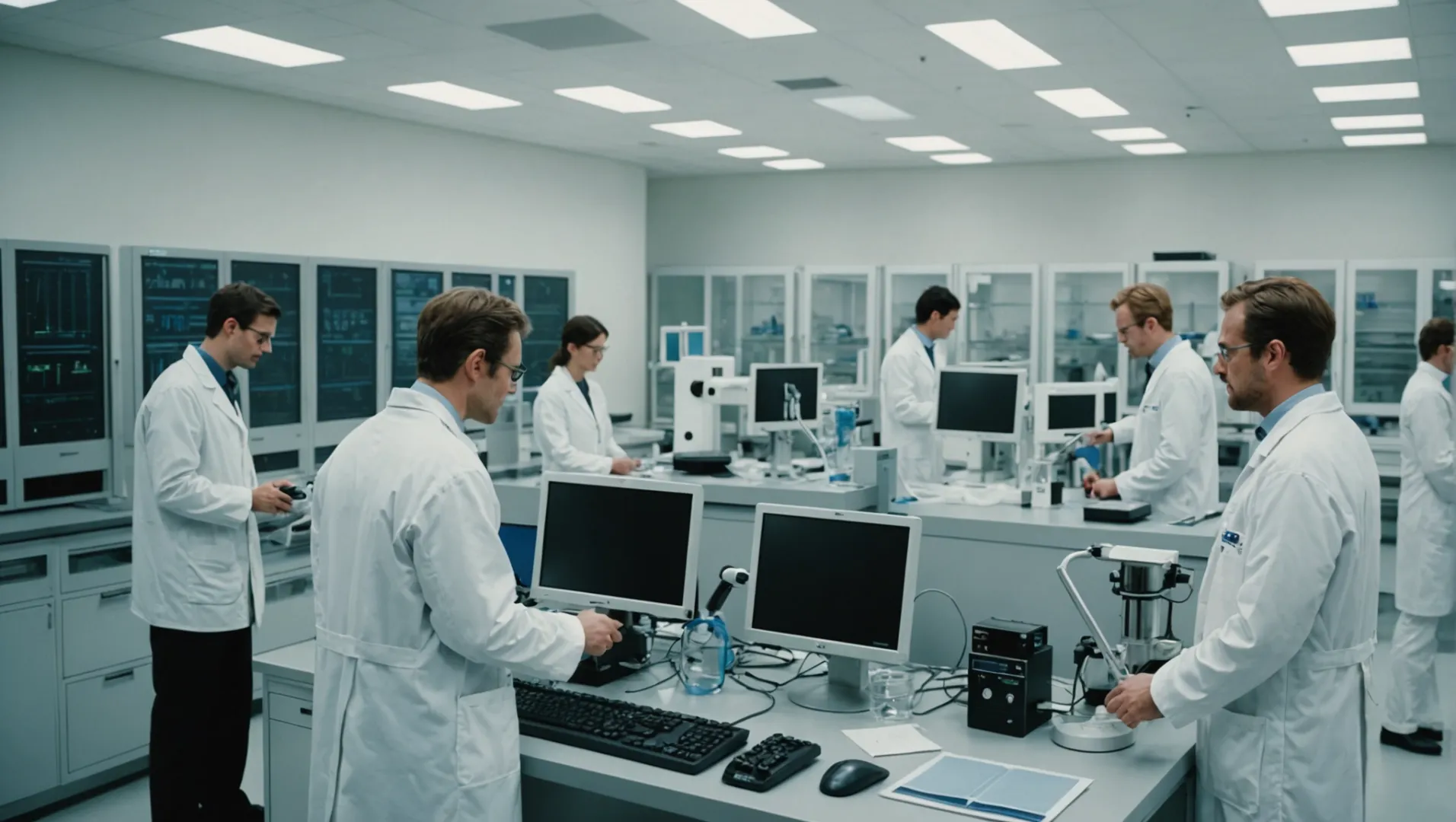
비용 분석을 위한 도구로서의 프로토타입
공기청정기를 개발하는 것은 많은 비용이 소요되는 작업으로, 각 결정이 전체 예산에 큰 영향을 미칠 수 있습니다. 개발자는 프로토타입을 사용하여 다음을 테스트하고 개선할 수 있습니다. 주요 성과 지표2 같은 CADR (청정 공기 공급률), 공기 흐름, 소음 수준을 측정한 후 고가의 생산 도구를 사용하기 전에 테스트할 수 있습니다. 초기 테스트는 품질 저하 없이 비용을 절감할 수 있는 부분을 정확히 찾아내는 데 도움이 됩니다.
예를 들어, 프로토타입에서 특정 설계 요소가 과도한 소음을 유발하는 것으로 밝혀지면 엔지니어는 대체 재료나 구조 수정을 실험하여 더 낮은 비용으로 원하는 성능을 달성할 수 있습니다. 이러한 인사이트는 보다 비용 효율적인 최종 제품을 만드는 데 매우 유용합니다.
시장 피드백 및 비용 관리
기능적 프로토타입은 또한 초기 마케팅 단계에서 시드 고객을 유치하는 데 중요한 역할을 합니다. 초기 시장 피드백은 개발자가 우선순위를 정하거나 제거할 기능에 대해 정보에 입각한 결정을 내리는 데 도움이 되므로 제품 설계 및 개발 프로세스를 간소화할 수 있습니다. 이러한 피드백 루프는 공기청정기 제조에 많은 비용이 소요되는 툴링에 대한 후속 투자 비용을 낮출 수 있습니다.
고객 피드백에 따르면 특정 기능이 덜 중요하다고 판단되는 시나리오를 생각해 보세요. 그러면 개발자는 리소스를 다른 곳에 할당하여 비용 관리 전략을 최적화할 수 있습니다.
| 프로토타입 혜택 | 비용 영향 |
|---|---|
| 초기 성능 테스트 | 프로덕션에서 예상치 못한 비용 절감 |
| 시장 피드백 | 기능 우선순위 최적화 |
| 공급업체 평가 | 장기적인 비용 효율성 보장 |
프로토타이핑을 통한 공급업체 평가
프로토타이핑은 공급업체의 신뢰성과 개발 능력을 평가하는 기준이 됩니다. 공급업체가 설계 사양을 충족하는 프로토타입을 제공하는 데 어려움을 겪는다면 향후 생산에 잠재적인 문제가 있을 수 있습니다. 툴링 후 공급업체를 변경하면 상당한 기회 비용이 발생할 수 있으므로 올바른 공급업체를 선택하는 것이 중요합니다.
개발자는 공급업체의 기능적 프로토타입 제작 능력을 평가함으로써 파트너로서의 장기적인 생존 가능성을 가늠할 수 있습니다. 이 평가는 위험을 완화하고 선택한 공급업체가 품질을 유지하면서 비용을 효과적으로 관리할 수 있도록 도와줍니다.
개발 일정 가속화
프로토타이핑의 잘 알려지지 않은 장점은 전체 개발 일정을 단축할 수 있다는 점이며, 이는 본질적으로 비용 관리에 영향을 미칩니다. 공급업체는 종종 다음과 같은 테스트 프로세스에 기능적 프로토타입을 사용합니다. CNC 가공 또는 UL/ETL 인증을 획득하여 제품 출시 일정을 몇 주 단축할 수 있습니다.
이러한 일정을 단축함으로써 기업은 제품을 더 빨리 시장에 출시하여 보유 비용을 최소화하고 초기 판매로 인한 수익 잠재력을 극대화할 수 있습니다. 예를 들어 개발 시간을 4~8주 단축하면 간접비를 크게 절감하고 시장에서 경쟁 우위를 확보할 수 있습니다.
프로토타입은 공기청정기 생산 비용을 절감합니다.True
프로토타입은 비용 절감 기회를 파악하여 재정적 위험을 최소화합니다.
프로토타입을 건너뛰면 공기청정기 개발 속도가 빨라집니다.False
프로토타입을 사용하면 디자인을 조기에 다듬어 일정을 단축할 수 있습니다.
프로토타입 테스트에서 공급업체 평가가 중요한 이유는 무엇인가요?
프로토타입 테스트 중에 공급업체를 평가하는 것은 제품의 성공 여부를 좌우할 수 있습니다.
프로토타입 테스트 중 공급업체 평가는 신뢰성, 역량, 비용 관리를 보장하여 프로젝트의 성공을 보장합니다.
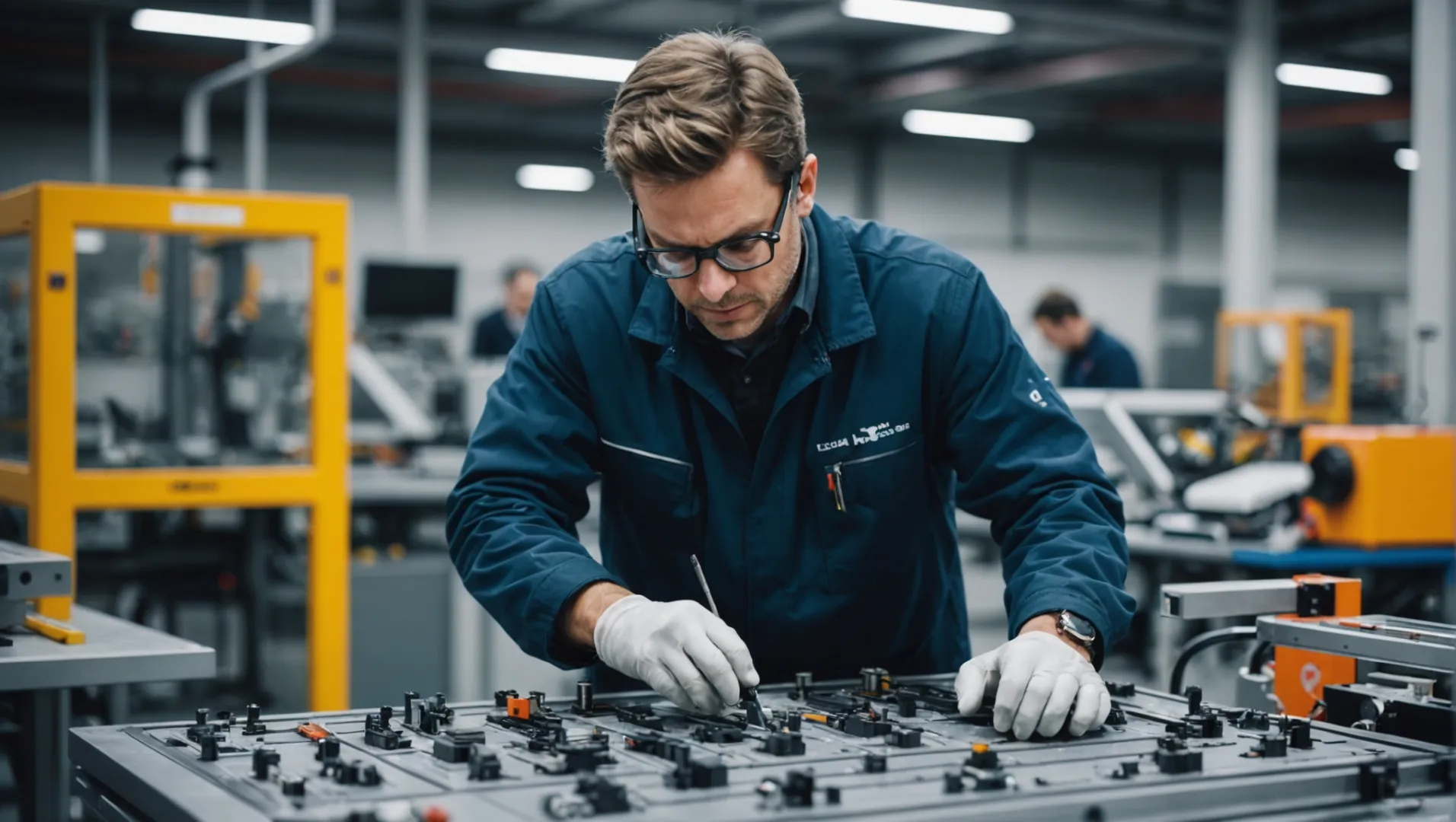
공급업체 신뢰성 및 역량 평가
프로토타입을 개발할 때 공급업체의 신뢰성과 역량을 테스트합니다. A 공급업체의 역량3 복잡하고 정교한 디자인을 처리하는 것은 매우 중요합니다. 공급업체가 까다로운 프로토타입을 처리하는 데 어려움을 겪는다면 본격적인 생산을 지원할 수 있는 능력에 잠재적인 문제가 있다는 뜻입니다. 툴링 후 공급업체를 교체하면 상당한 기회 비용과 프로젝트 지연이 발생할 수 있습니다.
비용 분석의 중요성
비용 관리는 모든 신규 프로젝트의 필수 요소입니다. 프로토타입 테스트 중에 공급업체는 자재 명세서(BOM) 단가를 결정하는 데 중요한 역할을 합니다. 이러한 초기 비용 분석을 통해 기업은 공급업체 비용을 효과적으로 관리하여 제품이 소매 가격 목표를 충족하고 시장에서 경쟁력을 유지할 수 있습니다.
| 측면 | 고려 사항 |
|---|---|
| BOM 정확성 | 공급업체가 상세한 BOM을 제공하는지 확인 |
| 소매 가격 목표 | 정렬 BOM 소매 가격 전략에 따른 비용 |
개발 일정 가속화
유능한 공급업체는 기능 테스트를 수행하고 다음을 제공함으로써 개발 프로세스를 신속하게 진행할 수 있습니다. CNC 다음과 같은 인증을 위한 프로토타입 UL 또는 ETL. 이렇게 하면 일정을 4~8주 단축할 수 있어 빠르게 변화하는 시장에서 경쟁 우위를 확보할 수 있습니다. 따라서 이러한 프로세스를 효율적으로 지원할 수 있는 공급업체를 선택하는 것은 빠른 시장 진입을 위해 매우 중요합니다.
장기적인 파트너십 잠재력
프로토타입 테스트는 즉각적인 프로젝트 요구 사항뿐만 아니라 공급업체가 장기적인 파트너가 될 수 있는지 평가하는 과정이기도 합니다. 일관된 성능, 예상치 못한 문제를 처리하는 유연성, 프로토타입 단계에서의 투명한 커뮤니케이션은 장기적인 협업에 대한 공급업체의 잠재력을 반영합니다.
요약하면, 프로토타입 테스트 중 공급업체 평가는 제품 개발 프로세스가 원활하고 비용 효율적이며 시기적절하게 진행되도록 보장하여 향후 파트너십과 시장 성공의 발판을 마련하는 데 매우 중요합니다.
툴링 후 공급업체를 변경하면 기회 비용이 증가합니다.True
툴링 후 공급업체를 변경하면 프로젝트가 지연되고 추가 비용이 발생할 수 있습니다.
BOM 정확도는 소매 가격 책정 전략과 무관합니다.False
정확한 BOM은 비용을 소매 가격에 맞추는 데 필수적입니다.
프로토타입 테스트는 공기청정기 시장 출시를 어떻게 가속화할 수 있을까요?
프로토타입 테스트는 디자인과 기능을 조기에 최적화하여 공기청정기의 출시 기간을 단축하는 데 매우 중요한 역할을 합니다.
프로토타입 테스트를 통해 디자인을 개선하고 성능을 검증하며 초기 시장 피드백을 수집하여 공기청정기 시장 출시 속도를 높이고 수정에 소요되는 시간을 단축할 수 있습니다.
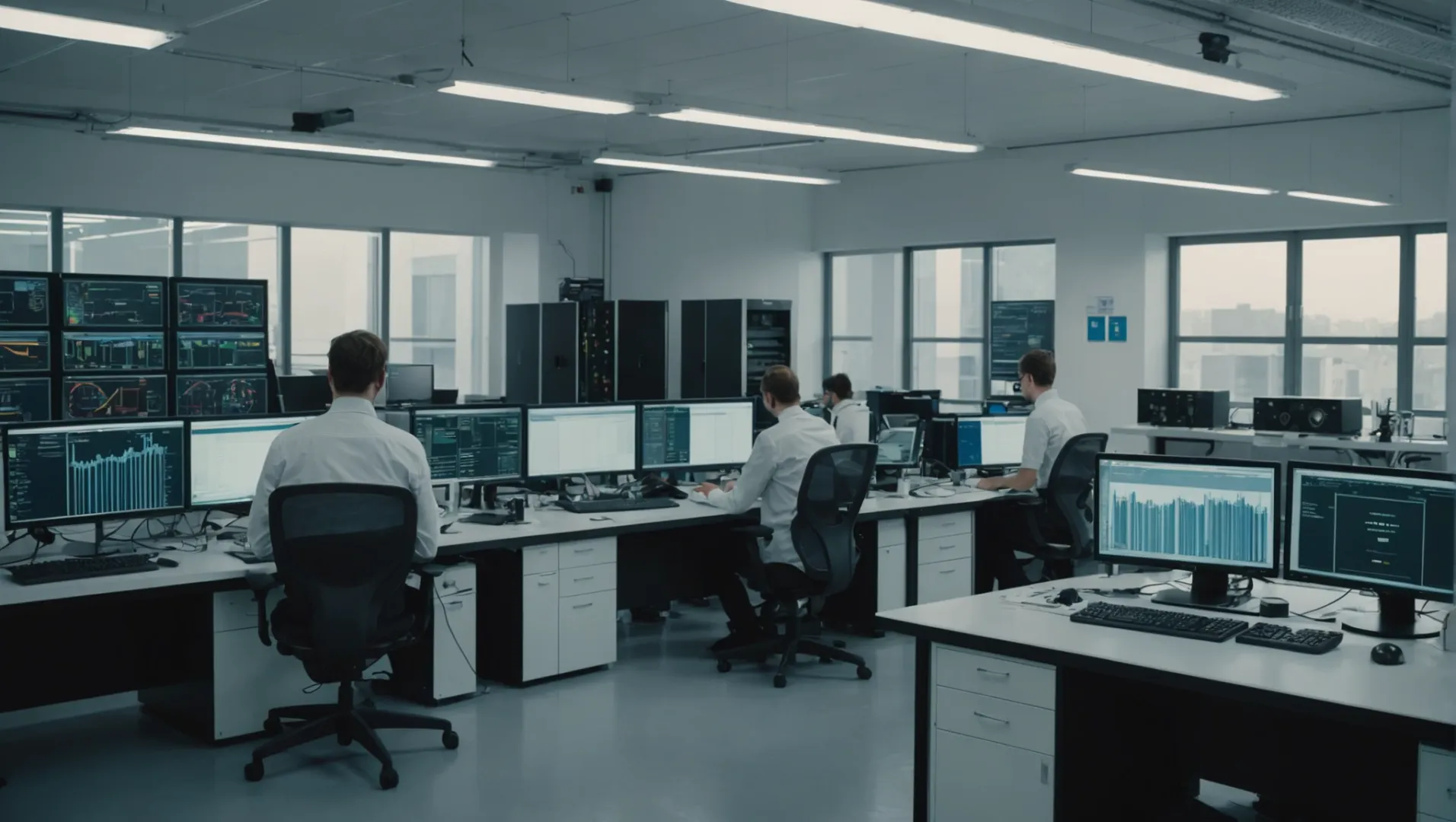
디자인 및 기능 개선
프로토타입 테스트가 시장 출시를 가속화하는 주요 방법 중 하나는 팀이 본격적인 생산 전에 디자인 결함을 파악하고 해결할 수 있도록 지원하는 것입니다. 다음을 검토하여 중요한 성능 지표4 청정 공기 전달률(CADR), 공기 흐름, 소음 수준 등을 고려하여 개발자는 프로세스 초기에 필요한 조정을 수행할 수 있습니다. 이러한 사전 예방적 접근 방식은 나중에 비용이 많이 드는 재설계를 방지합니다.
초기 시장 피드백 얻기
기능적 프로토타입은 초기 시장 피드백을 수집하는 데 유용한 도구 역할을 합니다. 기업은 이러한 프로토타입을 시드 고객에게 소개하여 반응을 평가할 수 있습니다. 이 전략은 소비자의 니즈를 이해하는 데 도움이 될 뿐만 아니라 마케팅 전략을 개선하는 데 필수적인 인사이트를 제공합니다.
비용 관리 간소화
프로토타입을 생성하면 제조업체는 자재 명세서(BOM) 비용 분석에 중요한 요소입니다. 이 단계는 수익성을 보장하면서 경쟁사 가격과 일치하는 현실적인 소매 가격을 설정하는 데 도움이 됩니다. 또한 기능적 프로토타입5를 통해 기업은 일반적으로 공기청정기에 많이 사용되는 툴링 투자에 대해 정보에 입각한 결정을 내릴 수 있습니다.
공급업체 신뢰성 평가
프로토타입 테스트는 잠재적인 공급업체의 역량을 평가하는 데 중요한 역할을 할 수 있습니다. 공급업체가 고품질의 프로토타입을 제공하는 데 어려움을 겪는다면 대량 생산에 잠재적인 문제가 있을 수 있으므로 기업은 공급업체 선택을 재고해야 합니다. 이 평가 프로세스는 공급업체의 신뢰성과 관련된 위험을 완화합니다.
인증 프로세스 가속화
프로토타입은 다음과 같은 예비 인증 테스트에 사용할 수 있습니다. UL 또는 ETL 테스트를 수행하여 규정 준수 문제를 조기에 파악하는 데 도움이 됩니다. 이렇게 하면 전체 개발 일정을 몇 주 단축할 수 있어 시장 출시가 빨라집니다.
이러한 전략을 활용하면 프로토타입 테스트를 통해 콘셉트에서 제품 출시까지 걸리는 시간을 효과적으로 단축하여 시장에서 공기청정기의 경쟁력을 높일 수 있습니다.
프로토타입 테스트는 공기청정기의 재설계 비용을 줄여줍니다.True
설계 결함을 조기에 발견하면 나중에 비용이 많이 드는 수정 작업을 방지할 수 있습니다.
공기청정기 프로토타입은 인증 테스트에 사용할 수 없습니다.False
프로토타입은 예비 인증 테스트에 사용되어 시간을 절약할 수 있습니다.
결론
프로토타입은 디자인과 기능을 개선하고 시장 진입을 지원하며 비용을 최적화하여 공기청정기의 성공을 보장하는 데 없어서는 안 될 필수 요소입니다. 프로토타이핑을 도입하여 제품 개발 전략을 개선하고 경쟁 우위를 확보하세요.
-
BOM이 제품 설계의 비용 효율성에 미치는 영향을 이해합니다: 자재 명세서는 제품이나 서비스를 구성, 제조 또는 수리하는 데 필요한 원자재, 구성 요소 및 지침의 광범위한 목록입니다. ↩
-
공기청정기 설계 결정을 안내하는 중요한 지표에 대해 알아보세요..: 저희의 프로토타입을 사용하면 공기질과 관련 핵심 성과 지표(KPI)를 가공된 형태로 표시할 수 있습니다. 올바른 KPI를 사용하면 ... ↩
-
공급업체의 역량을 효과적으로 평가하는 방법을 알아보세요: 신규 또는 기존 공급업체를 평가할 때 고려해야 할 5가지 핵심 요소인 품질, 역량, 위험, 비용 및 가격에 세심한 주의를 기울이세요. ↩
-
프로토타입 평가에 중요한 메트릭 알아보기..: 공기청정기의 효과는 필터 효율, 공기 유량, 공기 흐름 패턴이라는 세 가지 핵심 성과 지표에 따라 달라집니다. ↩
-
비용 효율적인 생산을 위해 기능성 프로토타입이 필수적인 이유를 알아보세요: 기능적 프로토타입은 개발 프로세스 초기에 위험을 식별하고 완화하여 비용이 많이 드는 실수의 가능성을 줄이거나 ... ↩


